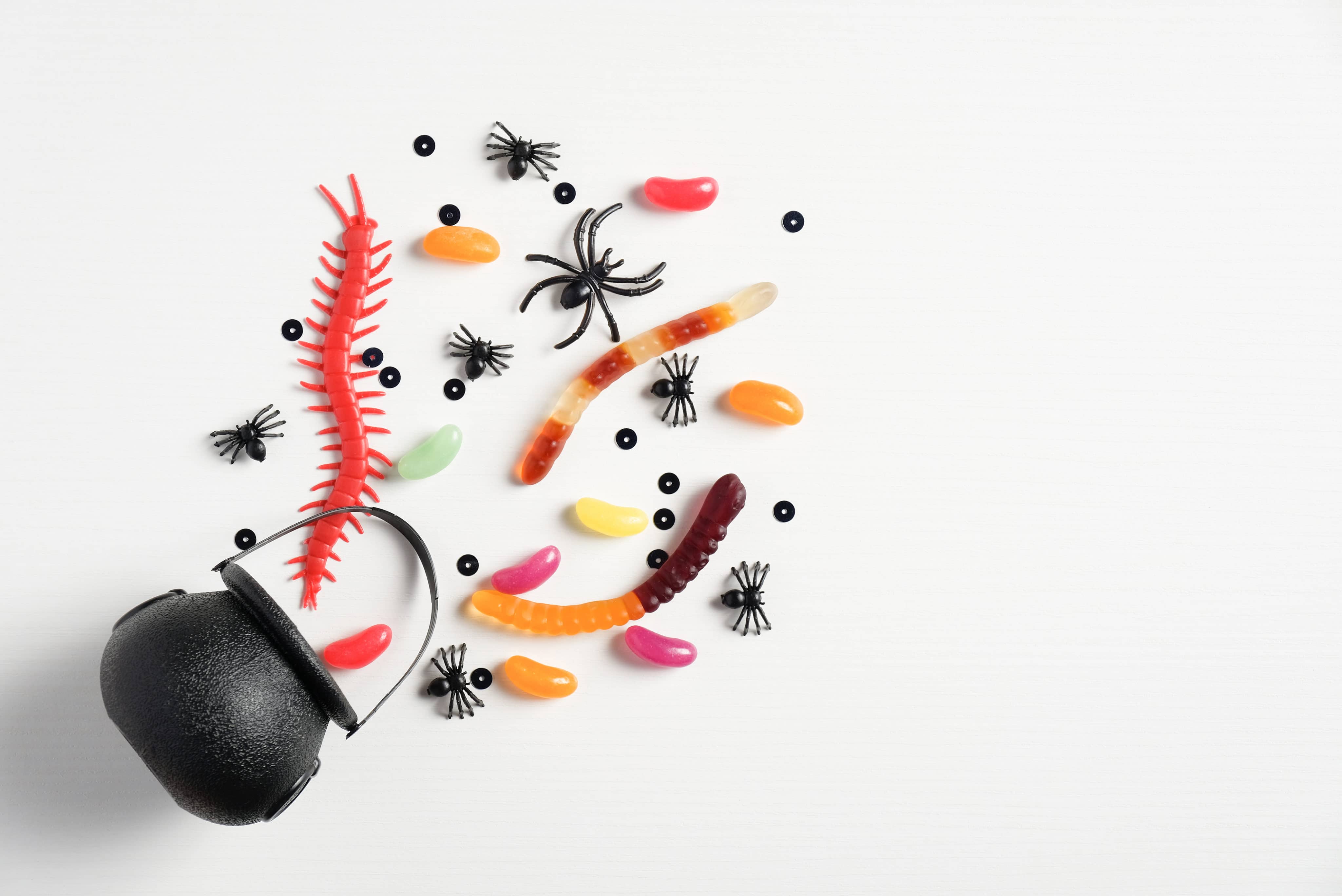The Myth of Cannabis-Infused Halloween Candy—Debunked
FeaturedTrending Stories October 27, 2021 MJ Shareholders 0

With every Halloween that passes, articles and news coverage warning parents about finding cannabis-infused edibles in their kid’s candy bags are revived. The fact is that these warnings and tall tales, while issued with good intentions, are simply not rooted in truth.
A new Snopes article dug into the myths and origin of this annual charade. While the first state to legalize medical cannabis was California in 1996, cannabis-infused edibles were largely produced as baked goods. At the time, perfecting the art of an infused gummy bear or other recognizable candy was not yet the norm. Snopes ascertains that the topic began to gain attention around 2010, when medical cannabis candies were being advertised in newspapers and other print media.
Scare-tactic stories have real-life consequences. The Los Angeles Times reported that law enforcement confiscated cannabis-infused candies from dispensaries on October 30, 2010.
“Investigators have confiscated candies and snacks containing pot from marijuana dispensaries, and they are concerned such items could wind up in children’s trick-or-treat bags… The warning comes days before Californians vote on Proposition 19, the marijuana legalization measure.” The result was a defeated legalization effort, with 53.46 percent of votes not in favor of the Proposition, and 46.54 percent voting in favor.
University of Delaware Professor of Sociology and Criminal Justice Joel Best recently spoke with Fox News regarding his thorough research on the topic.
“My research stretches back to 1958,” Best shared with Fox News. “I have been unable to find any evidence that any child has been killed or seriously injured by a contaminated treat picked up in the course of trick-or-treating.”
Best authored one study in 1985 entitled “The Razor Blade in the Apple: The Social Construction of Urban Legends,” which explored the history of adults giving harmful items to kids on Halloween. His conclusion was that even these events were greatly exaggerated.
“A review of news stories about Halloween sadism from 1958-1983 suggests that the threat has been greatly exaggerated. Halloween sadism can be viewed as an urban legend which emerged during the early 1970s to give expression to growing fears about the safety of children, the danger of crime and other sources of social strain.” Best is also the author of a sociology book called Threatened Children: Rhetoric and Concern about Child-Victims.
The Real Threats to Children
Of course, we can’t ignore that a small number of children accidentally consume infused candies. However, this fear may stem from a tragic incident in which a father put cyanide into his son’s Halloween candy in 1974. Since then, there have been numerous articles sensationalizing the fear of unsuspecting children being harmed by their Halloween candy. Drug-laced suckers were a concern in 2000. Ecstasy-laced candies were the urban legend craze of 2015. Just two years ago in 2019, heroin-infused SweeTARTS were the topic of discussion. Not one of these examples are confirmed as factual, according to Snopes’ research.
Every year, online articles continue to exaggerate the fear of cannabis making its way into the hands of children on Halloween. Headlines such as “Colorado parents are freaking out about marijuana in Halloween candy,” “Watch out for cannabis candies this Halloween” or “Pot candy and Halloween: A dangerous mix?” perpetuate the urban legend—hijacking people’s existing fears about child safety.
Ultimately, on the topic of cannabis being intentionally placed in kids’ trick-or-treat bags, there is very little evidence of this happening. Snopes does mention an incident that occurred in Nova Scotia in 2019 in which parents found a cannabis edible in their children’s trick-or-treat bags, but there was no evidence of it being intentionally placed there, nor was it consumed by the child. In reality, there is a very real problem with vehicular-related accidents on Halloween. According to a Washington Post analysis, Halloween is one of the deadliest days of the year for children pedestrians.
Throughout the rest of the year there has been an increase in accidental consumption of infused edibles by children, which is largely due to 1.) parents not properly securing their edibles away from their children and 2.) the ongoing issue with illegal edibles resembling famous candy brands. Parents should seek out a way to secure their cannabis products, such as something that is tamper- and child-resistant.
Prevention is key in keeping cannabis out of the hands of minors. The MedTainer, Qube Child Resistant Concentrate Jar, or the Aviator Series by Chubby Gorilla are great for general child-resistant containers. To prevent teenagers from accessing your cannabis products, check out the Sneak Guard, The Cannador or Herb Guard Extra Large. If you’re looking for something fancier or high-tech, try high-end stash boxes such as The Apothecarry Case or Keep Labs’ KEEP box.
In regards to the topic of child access to cannabis, and the appeal of illegal cannabis brands advertising under the logo similarities of Hershey or Sour Patch Kids, the situation is ongoing. Parents are the first line of defense in keeping their kids away from cannabis, but lawmakers have also enacted legislation over the years to further prevent cannabis edibles from appealing to kids. In Colorado in 2017, the state approved House Bill 1436, which banned edibles from being made in shapes that might entice kids.
MJ Shareholders
MJShareholders.com is the largest dedicated financial network and leading corporate communications firm serving the legal cannabis industry. Our network aims to connect public marijuana companies with these focused cannabis audiences across the US and Canada that are critical for growth: Short and long term cannabis investors Active funding sources Mainstream media Business leaders Cannabis consumers










No comments so far.
Be first to leave comment below.